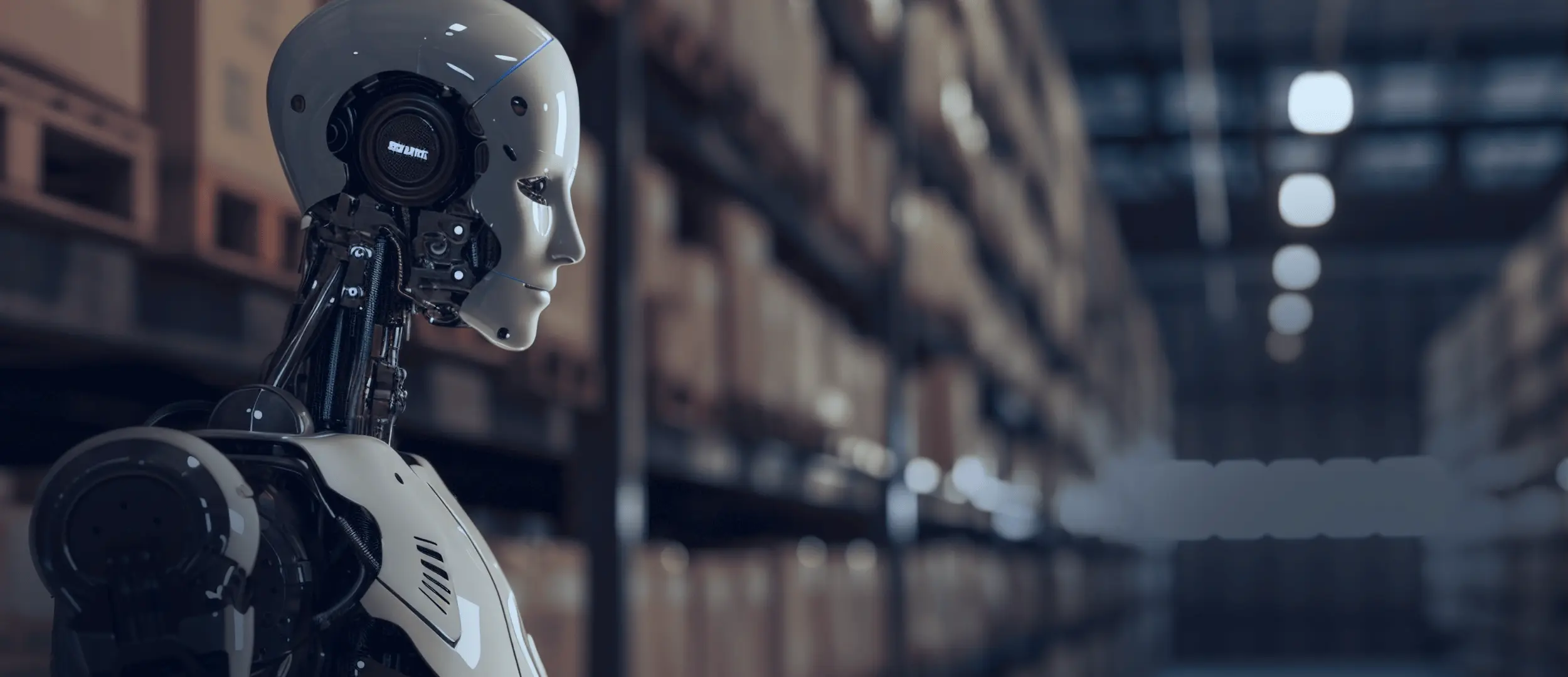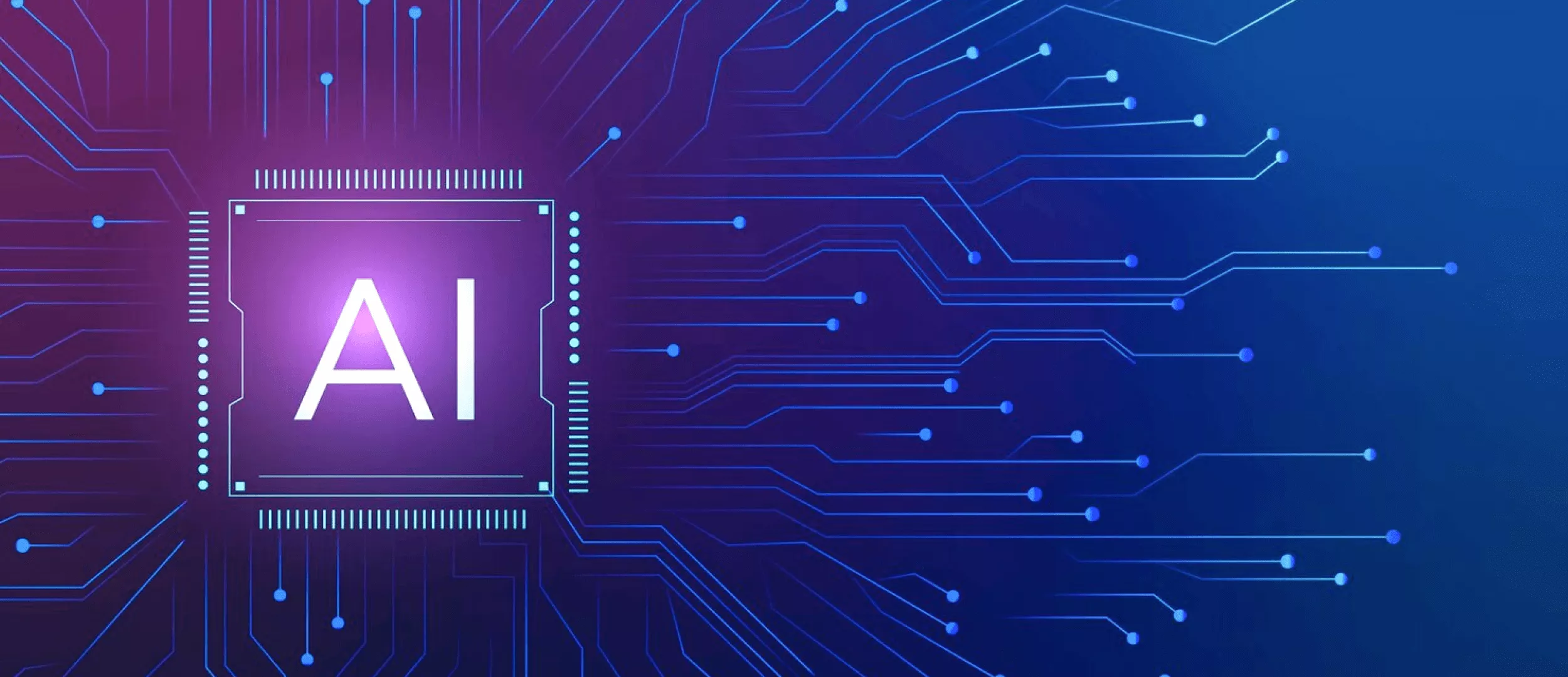
The notion of deep learning causes multiple questions among people who have never faced this technology in practice. What is it, what is its technical background, and what benefits can it bring to technological companies? Let's analyse the basics.
As a part of artificial intelligence (AI), deep learning stands behind numerous innovations: self-driving cars, both voice and image recognition, etc. This technology has occupied multiple aspects of human lives. In 2023, the global market of deep learning constituted almost US$70 billion and is going to exceed US$1185 billion by 2033. They predict an unprecedented CAGR of 32.57% in the next decade.
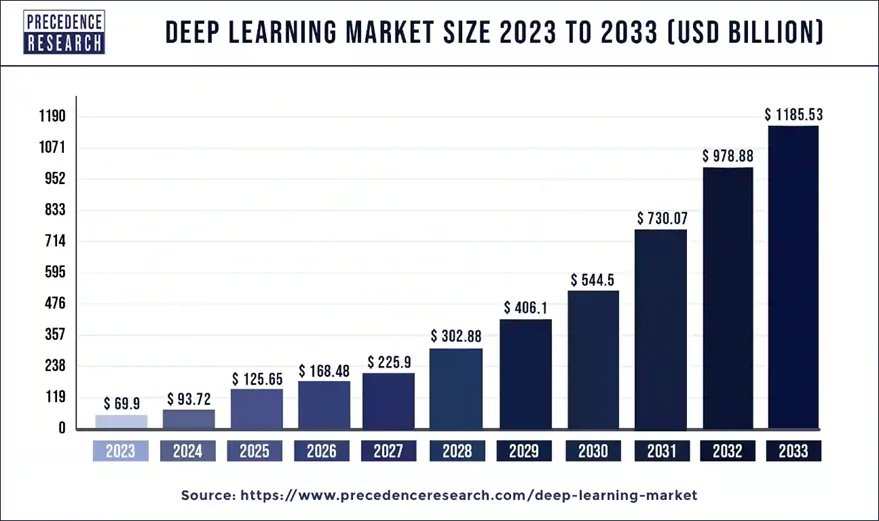
Such a huge interest in both machine and deep learning technologies is based on their advantages. So what is deep learning? Let’s clear this out.
To infer, deep learning solutions use a hierarchical approach involving determining the most important characteristics to compare.
The Definition of Deep Learning
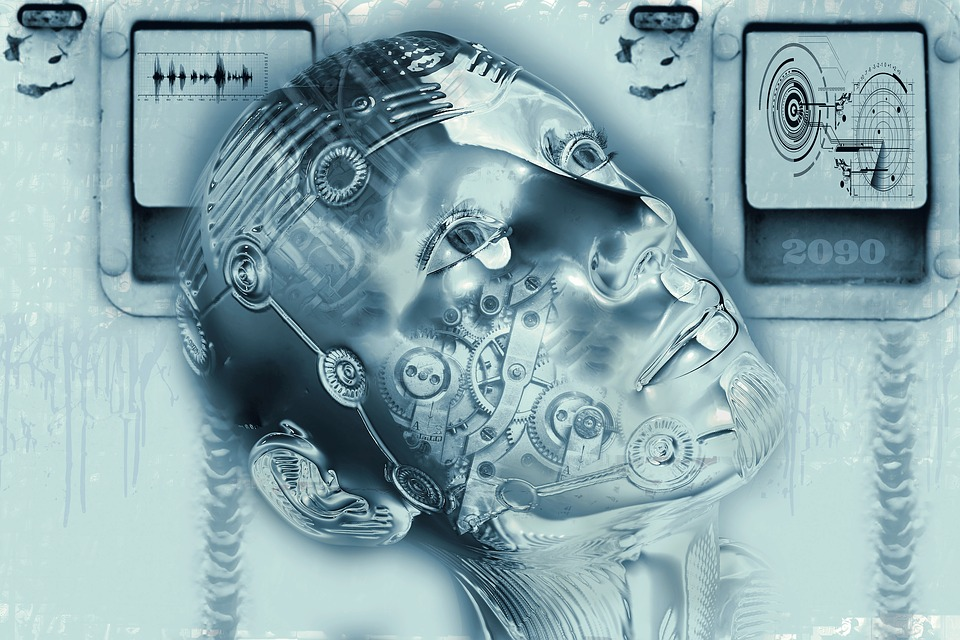
Deep learning is a set of machine learning algorithms that model high-level abstractions in data using architectures consisting of multiple nonlinear transformations. What does it mean?
A deep learning technology is based on artificial neural networks(ANNs). These ANNs constantly receive learning algorithms and continuously growing amounts of data to increase the efficiency of training processes. The larger data volumes are, the more efficient this process is. The training process is called «deep», because, with the time passing, a neural network covers a growing number of levels. The «deeper» this network penetrates, the higher its productivity is.
How Deep Learning Works
A deep machine learning process consists of two main phases: training and inferring. You should think about the training phase as a process of labeling large amounts of data and determining their matching characteristics. The system compares these characteristics and memorizes them to make correct conclusions when it faces similar data next time.
A deep learning training process includes following stages:
- ANNs ask a set of binary false/true questions or.
- Extracting numerical values from data blocks.
- Classifying data according to the answers received.
- Labeling Data.
During the inferring phase, the deep learning AI makes conclusions and label new unexposed data using their previous knowledge.
What Is the Difference between Deep Learning and Machine Learning?
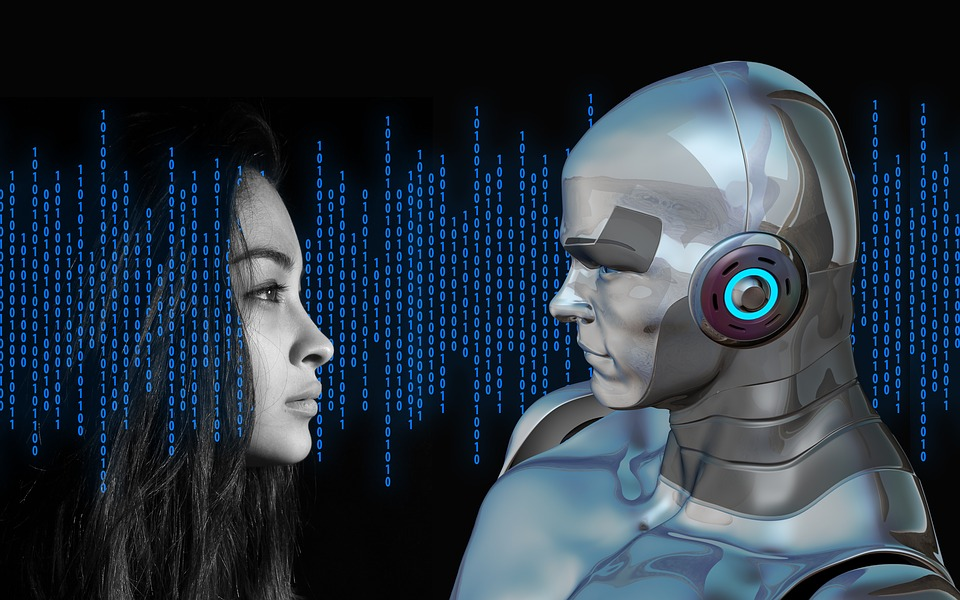
Deep learning is a kind of traditional machine learning. Classical machine learning is the extraction of new knowledge from a large data array loaded into the machine. Users formulate the machine training rules and correct errors made by a machine. This approach eliminates a negative overtraining effect frequently appearing in deep learning.
In machine learning, users provide a machine with both examples and training data to help the system make correct decisions. This principle is called supervised learning. In other words, in a classical machine learning, a computer solves a large number of tasks, but it cannot form such tasks without a human control.
Diversity between machine learning (ML) and deep learning (DL):
- DL requires a lot of unlabeled training data to make concise conclusions while ML can use small data amounts provided by users.
- Unlike ML, DL needs high-performance hardware.
- ML requires features to be accurately identified by users while DL creates new features by itself.
- ML divides tasks into small pieces and then combine received results into one conclusion while DL solves the problem on the end-to-end basis.
- In comparison with ML, DL needs much more time to train.
- Unlike DL, ML can provide enough transparency for its decisions.
The concept of deep learning implies that the machine creates its functionality by itself as long as it is possible at the current time. To infer, deep learning applications use a hierarchical approach involving determining the most important characteristics to compare.
Advantages of Deep Learning
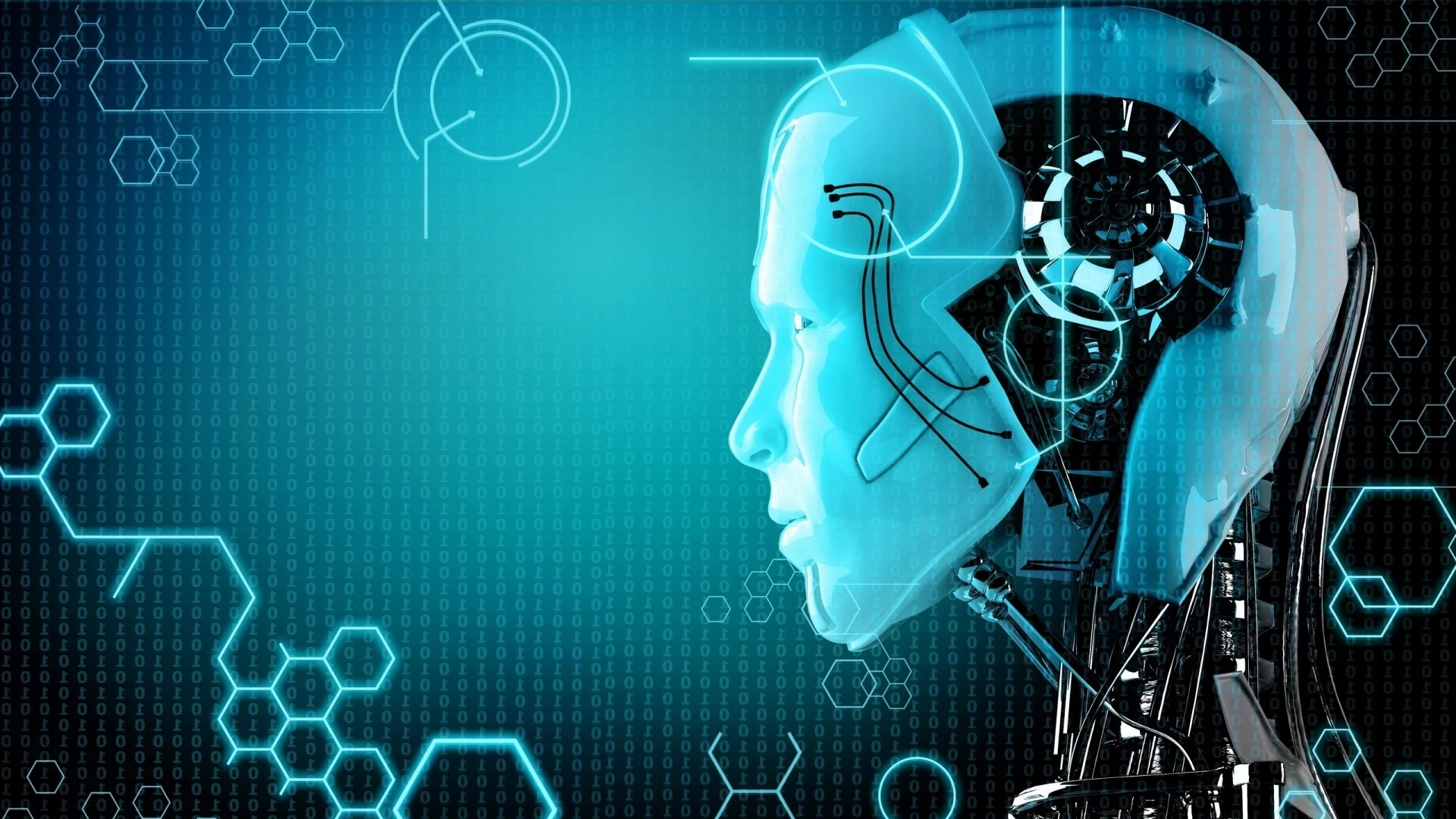
In 2016, Grand View Research (GVR) estimated the global deep learning market in $272 million. Its significant part (20%) belonged to both aerospace and defense industries. From 2014, the deep learning market shows a continuous parabolic growth. GVR’s latest report states that this market will reach the value of $10.2 billion by the end of 2025. So what did cause such a remarkable market growth? The answer lies in the set of advantages provided by a deep learning technology.
Creating New Features
One of the main benefits of deep learning over various machine learning algorithms is its ability to generate new features from limited series of features located in the training dataset. Therefore, deep learning algorithms can create new tasks to solve current ones. What does it mean for data scientists working in technological startups?
Since deep learning can create features without a human intervention, data scientists can save much time on working with big data and relying on this technology. It allows them to use more complex sets of features in comparison with traditional machine learning software.
Advanced Analysis
Due to its improved data processing models, deep learning generates actionable results when solving data science tasks. While machine learning works only with labeled data, deep learning supports unsupervised learning techniques that allow the system become smarter on its own. The capacity to determine the most important features allows deep learning to efficiently provide data scientists with concise and reliable analysis results.
Deep Learning Challenges
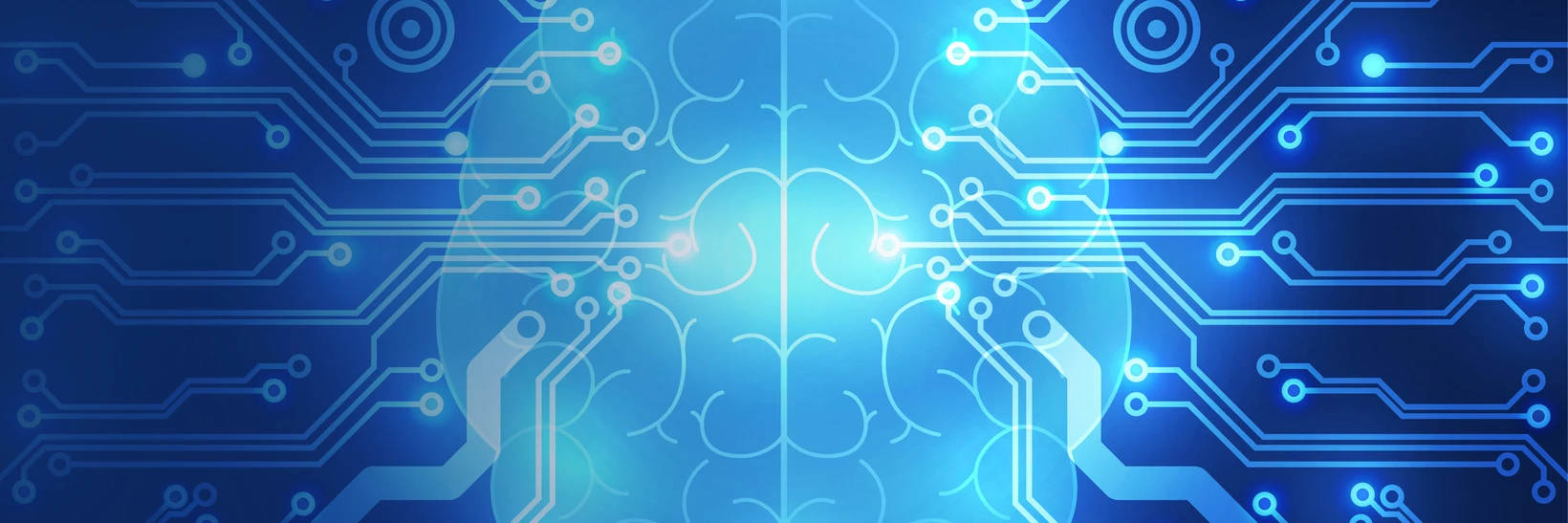
Deep learning is an approach that models human abstract thinking (or at least represents an attempt to approach it) rather than using it. However, this technology has a set of significant disadvantages despite all its benefits.
Deep learning is an approach that models human abstract thinking (or at least represents an attempt to approach it) rather than using it. However, this technology has a set of significant disadvantages despite all its benefits. So, let’s deal a bit with the challenges of deep learning.
Continuous Input Data Management
In deep learning, a training process is based on analyzing large amounts of data. Although, fast-moving and streaming input data provides little time for ensuring an efficient training process. That is why data scientists have to adapt their deep learning algorithms in the way neural networks can handle large amounts of continuous input data.
Ensuring Conclusion Transparency
Another important disadvantage of deep learning software is that it is incapable of providing arguments why it has reached a certain conclusion. Unlike in case of traditional machine learning, you cannot follow an algorithm to find out why your system has decided that it is a cat on a picture, not a dog. To correct errors in DL algorithms, you have to revise the whole algorithm.
Resource-Demanding Technology
Deep learning is a quite resource-demanding technology. It requires more powerful GPUs, high-performance graphics processing units, large amounts of storage to train the models, etc. Furthermore, this technology needs more time to train in comparison with traditional machine learning.
Despite all its challenges, deep learning discovers new improved methods of unstructured big data analytics for those with the intention to use it. Indeed, businesses can gain significant benefits from using deep learning within their tasks of data processing. Though, the question is not whether this technology is useful, rather how companies can implement it in their projects to improve the way they process data.
Let’s check the most common questions that arise in the context of deep learning.
FAQ
What is Deep Learning?
Deep learning is a kind of ML (machine learning). It uses the so-called DNNs, deep or multilayered neural networks, and simulates the work of a human brain. These neural networks are trained in decision-making on large amounts of data. Deep learning algorithms recognize and classify phenomena, detect patterns and relationships, assess possibilities, and make estimations, predictions, and, as a result, decisions. But how does deep learning work? The information enters through the input layer. Then it’s transported to the layers and processed there. Finally, the prediction is made, or the result is given out on the output layer. In fact, in a certain form, it powers most of the AI today. It drives various apps and services that enhance automation. It is realized through carrying out analytical and physical tasks without human intervention.
What is an example of deep learning?
Deep learning can solve diverse problems. It recognizes images and speech, processes natural language, etc. So, it’s widely used for digital assistants, voice-enabled devices and remote controls. It facilitates detecting fraudulent actions, self-driving cars, and generative AI. Customer service and healthcare use deep learning in a variety of ways and tools: chatbots, virtual assistants, call centers, etc. Deep learning helps in law enforcement. The algorithms quickly and accurately analyze and learn from transactional data (sound and video records, documents, images) and detect dangerous, fraudulent, or criminal activities. Predictive analytics is widely used in financial services. It is used to assess business risks, trade stocks, detect frauds, manage investment or credit portfolios, and so on. What are the three types of deep learning? As we know what is deep learning, let’s check the 3 types of it: supervised, unsupervised, and reinforcement learning. In the first case, the machine is “supervised”, a human operator feeds the algorithm data to help it learn. During unsupervised learning, the machine tries to detect less obvious patterns in the data itself. Reinforcement learning is the closest to human learning. The algorithm learns by interacting with the environment and getting a positive or negative reward.
Our company creates complex IT-solutions for large and medium businesses. Share your idea on info@stfalcon.com. We would be glad to develop innovative solution for you!


